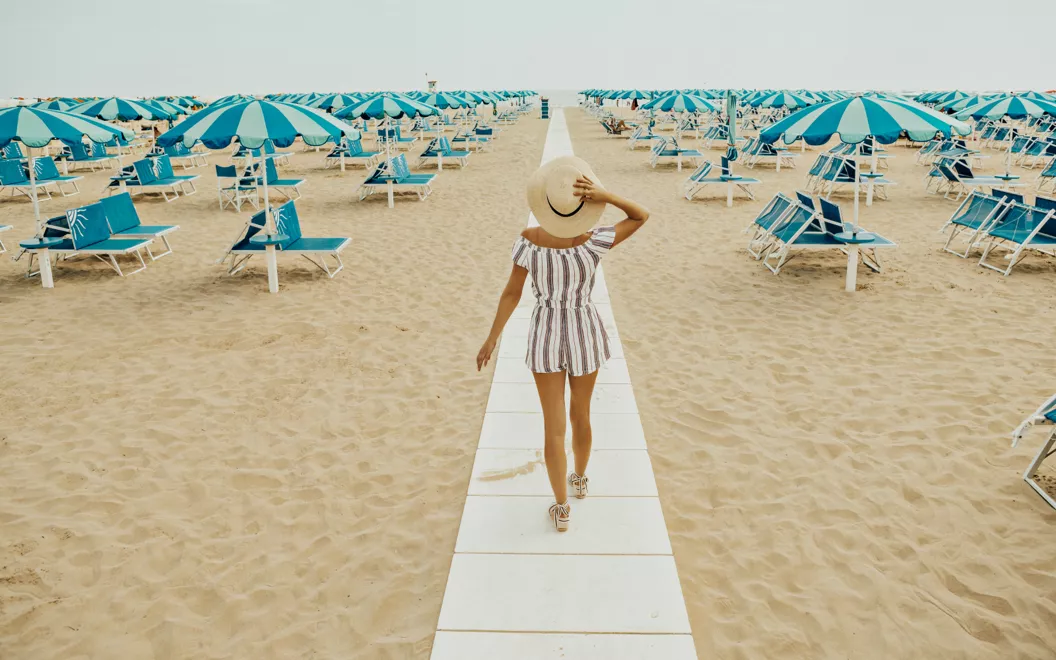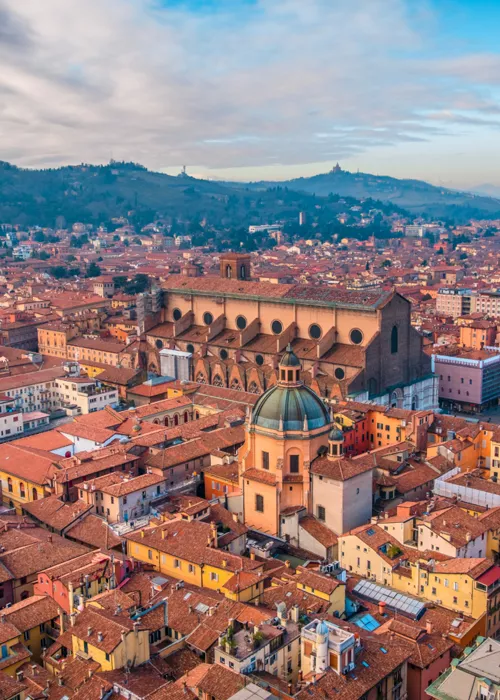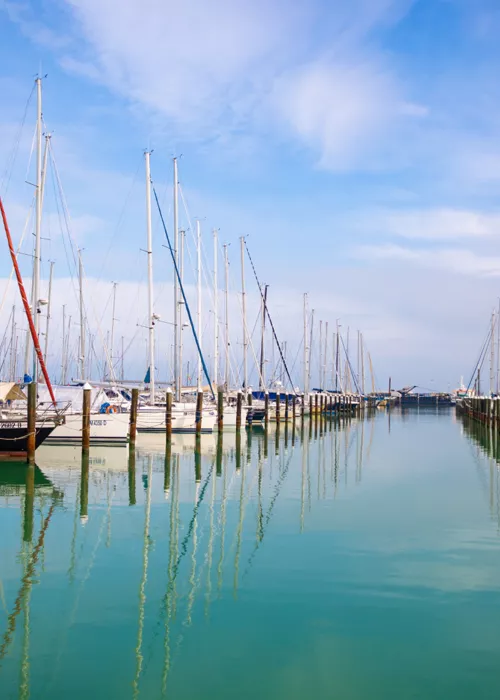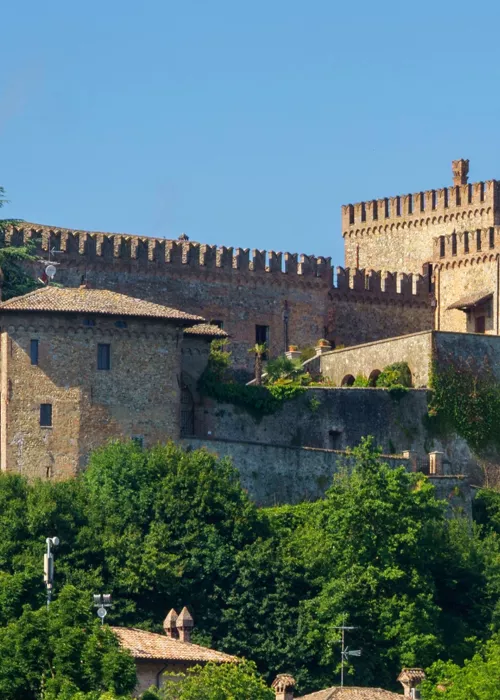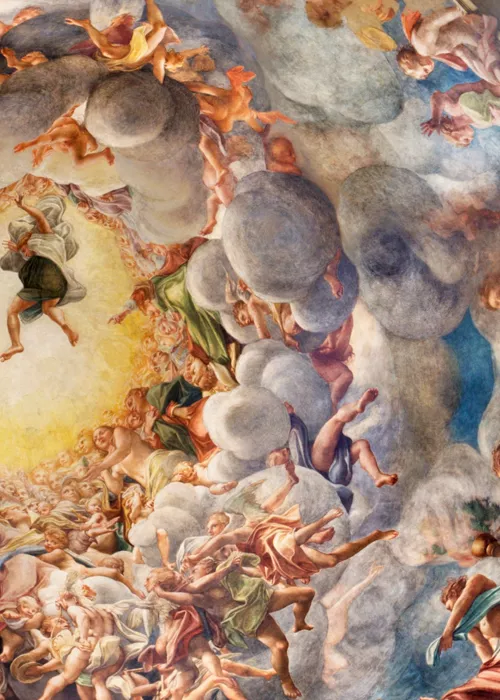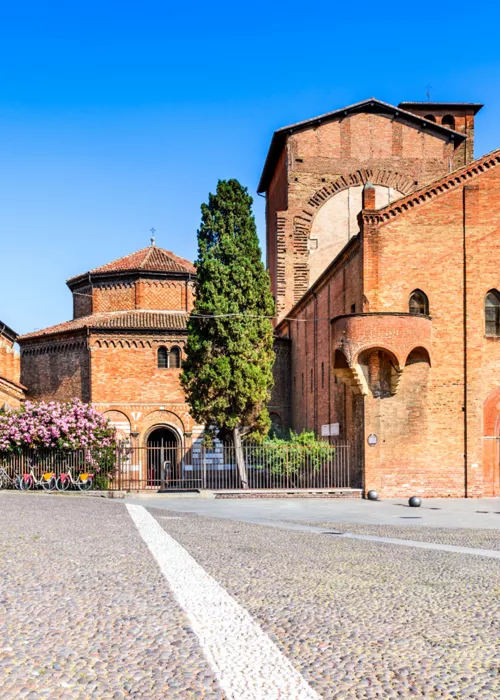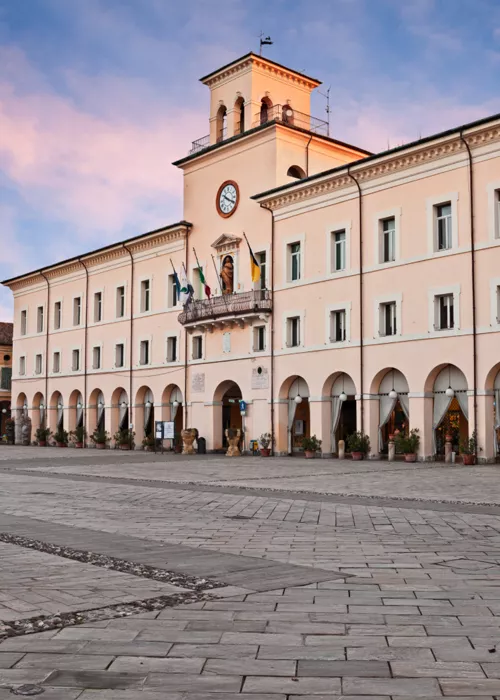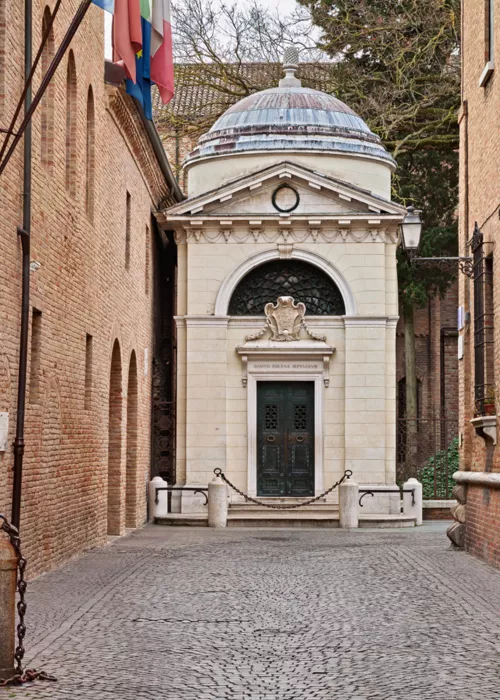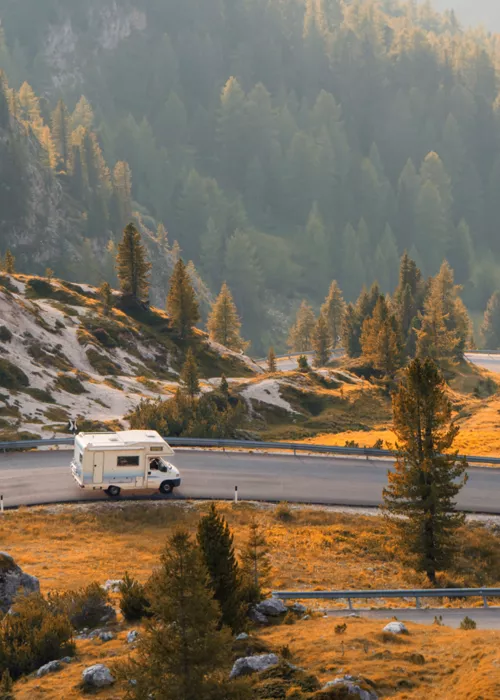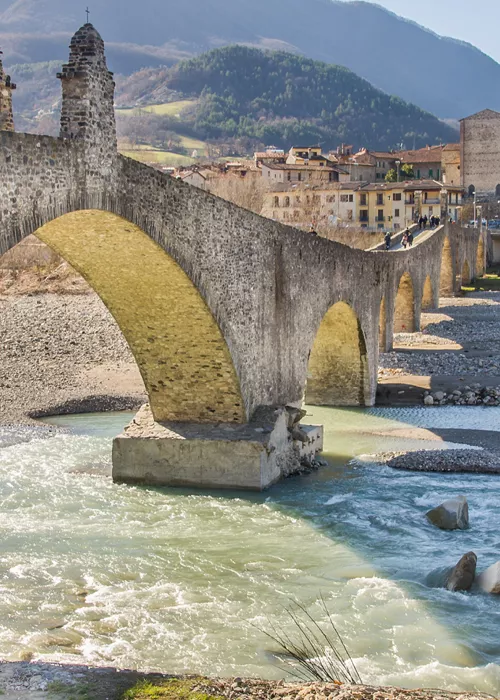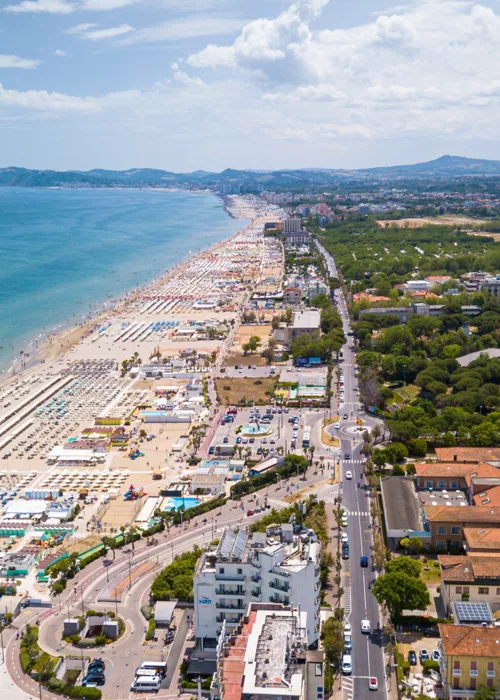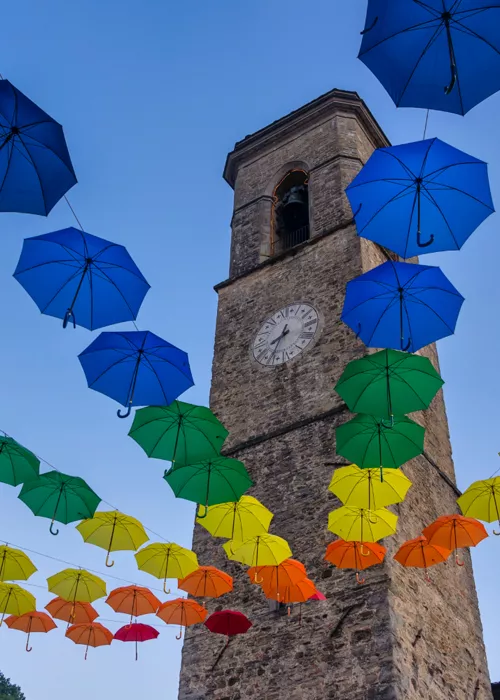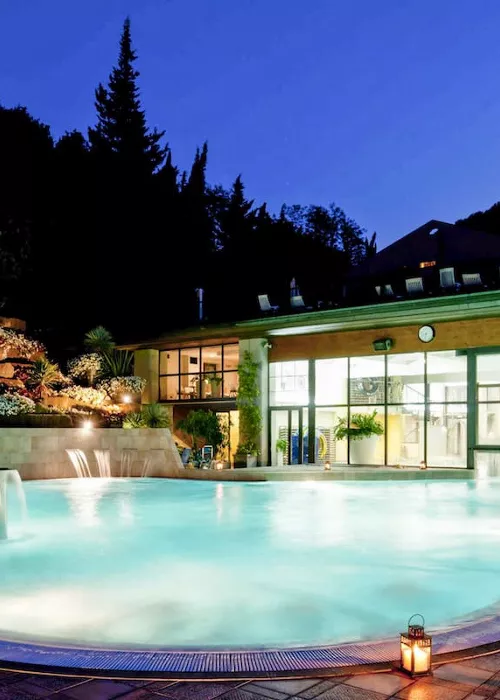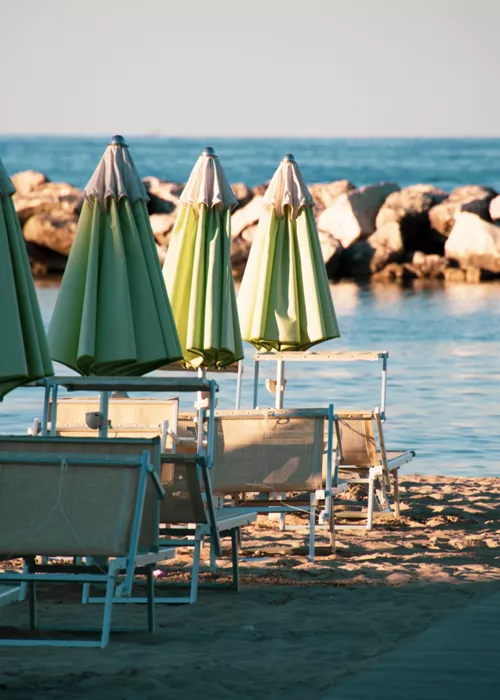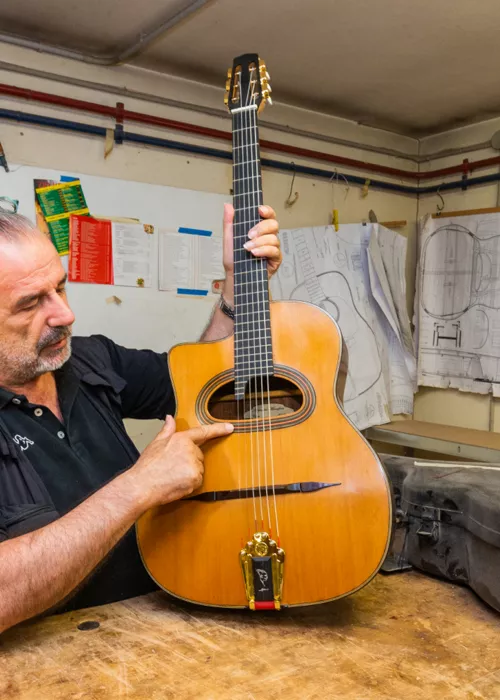Grand Hotel Rimini

An excursion to discover Rimini's seaside architecture must start with the city's symbol, the imposing Grand Hotel designed by architect Paolito Somazzi and open to the public since 1908. For over a century, this Art Nouveau monument has been an icon of the city's style and seaside history , surrounded by the greenery of the park named after Fellini and elected a national monument in 1994.
The elegant façade can also be admired from the beach, but the best spot from which to take the perfect photo of the Grand Hotel is at the beginning of Via Saint Maur des Fosses, in the heart of the park that pays homage to the Italian director and his deep connection with Rimini.
The structure was originally topped by two large domes, which were removed in 1920 after a fire. Subsequent restorations, however, have never changed the essence of the hotel, so even just walking past it will provide you with an atmospheric step into the past.
On foot, you can walk around the perimeter of the hotel and admire the sinuous lines of the exterior, side by side, rich in natural and anthropomorphic elements, but you can also pop inside without having to stay there, by booking your visit to this iconic Dolce Vita venue by phone.
The Grand Hotel organised a real museum tour on the occasion of the 110th anniversary of Federico Fellini's birth, a visit to the splendid salons and rooms furnished with authentic 18th-century Venetian and French pieces. You start in the garden and, after climbing the 6 steps of the main staircase, you find yourself on the picturesque terrace that made the young Fellini dream.
The large hall is located a little further on and from there you enter the Sala Fellini so dear to the director and his wife Giulietta Masina. The tour continues in the Tonino Guerra room, adorned with historical photos of the building, and in the historic salons, symbol of the international jet-set. What better way to discover this masterpiece?
The Nettuno Rimini

For the second leg of this excursion, you don't have to travel far. Nettuno Rimini, one of the few examples of seaside architecture that has survived intact to this day in Italy, is less than a kilometre away. You can reach it via the seafront or by walking along Viale Amerigo Vespucci to Piazzale Kennedy.
Since 1933, La Rotonda, as the locals call this structure, has been welcoming tourists by offering them a 360-degree view of the coastline while they sip drinks and admire the sunset on the terrace. The Deco style that defines the Neptune has remained intact even after the restyling that has taken place over the years, the latest in 2010 by Rimini architect Massimo Morandi.
Born as a bathing establishment, since the 1940s the Neptune has managed to establish itself in the city as a place of Rimini nightlife, with a state-of-the-art chiringuito, restaurant and piadineria.
Colonia Bolognese and Colonia Novarese

Ready for a long walk along Rimini's seafront? For the third and final stage of this excursion, you will have to reach the border with Riccione, covering 7 kilometres of coastline by bicycle, on foot or by taking one of the many buses heading south from the Federico Fellini Park. The destination is another symbolic place in the city's history, the "colonie" that since 1931, have hosted children and adolescents arriving from all over Italy.
A few metres away you can admire two of them, the Colonia Bolognese and the Colonia Novarese, built within a few years of each other in a very different style. The Colonia Bolognese is the oldest, built between 1931 and 1932 to a design by engineer Ildebrando Tabarroni. It looks like a hospital building, with a clear separation between rooms and a dry style marked by functionality.
After seeing the four large buildings connected by a long 169-metre corridor, you only have to walk 200 metres and cross the street to arrive in front of the large building of the former Colonia Novarese, built two years later to a design by the Turinese engineer Giuseppe Peverelli. The rationalist style that prevailed in Italy at that time is evident: the structure runs parallel to the beach in a single body built of exposed reinforced concrete, now reduced to a shell.
At the moment, pending a redevelopment project, the two colonie are only visible from the outside unless we are lucky. From time to time, in fact, it can be accessed during events organised by associations operating in Rimini.

